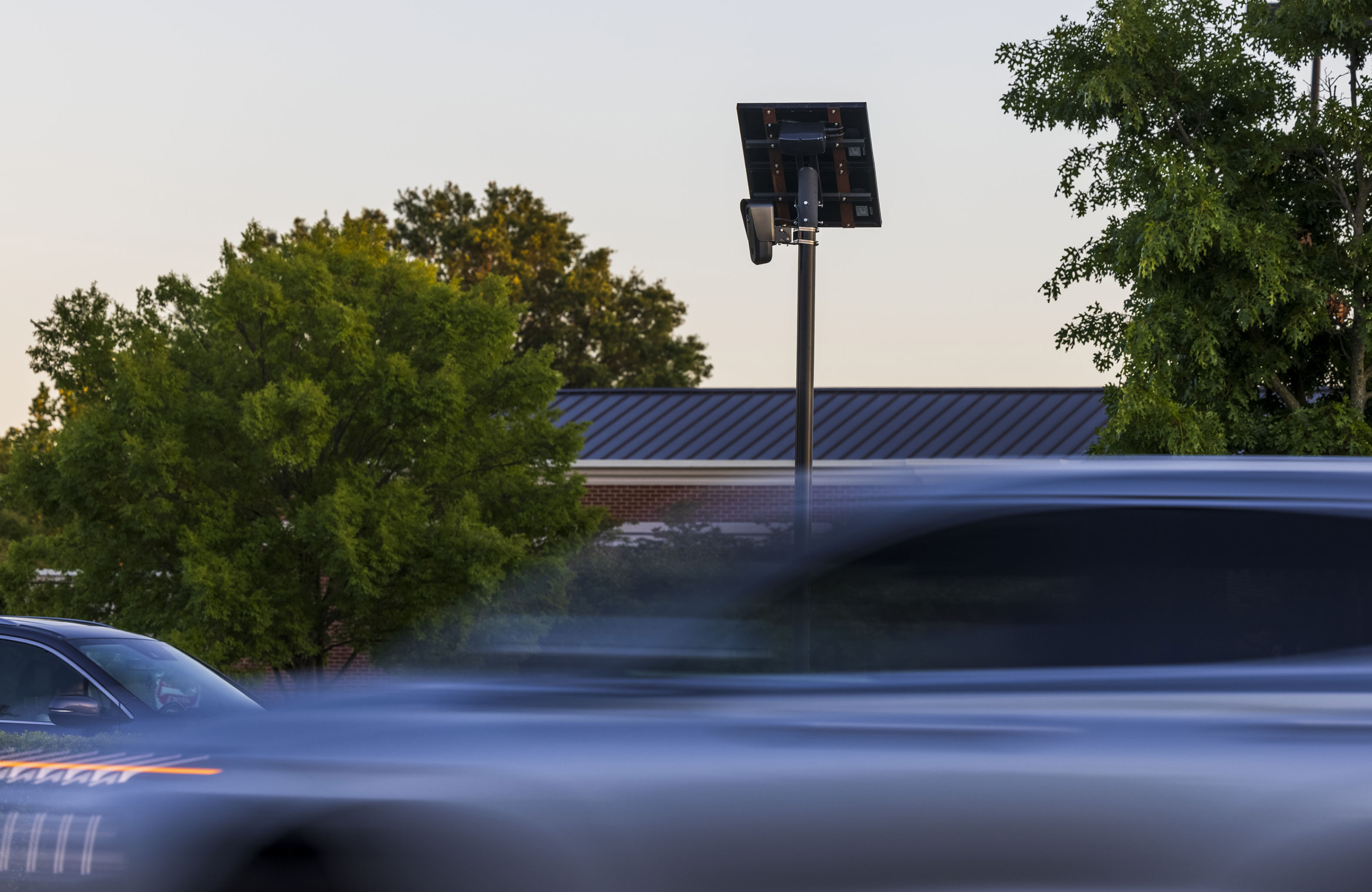Star Tribune
St. Paul partnership brings trust, opportunities to troubled Karen youth
Last year, fentanyl addiction ran roughshod over many Karen students at St. Paul’s Humboldt High School.
Staff often found drug paraphernalia in students’ backpacks. Youth were sent to the principal’s office almost daily for issues relating to addiction, and one student overdosed in the school bathroom. But after years spent crafting a partnership between the school, police and two nonprofits, officials have formed a blueprint to fight addiction and gang influence on youth in the Karen community.
As Humboldt High School’s social worker, Kati Vaudreuil walks the halls to start her day, voices sometimes squawk through her walkie talkie in efforts to thwart trouble. Other times, Vaudreuil hugs students and asks how they are doing. District data shows a third of Humboldt high’s students are Karen (pronounced Kuh-Ren), the highest percentage in St. Paul of the ethnic group native to Myanmar, formerly known as Burma. So when gang influence and fentanyl addiction struck an unequal number of Karen youth, Vaudreuil turned to the community for help.
“We said ‘we really need someone from the Karen community to help us,'” Vaudreuil said. “We started with KOM [The Karen Organization of Minnesota]. We got a partnership going, and it’s been like five years. We’ve had a few different case workers, but we couldn’t do it without them.”
Police learned last year of the “alarming rate” of fentanyl and methamphetamine use among the Karen teens, which fueled an escalating dispute between two gangs in St. Paul. As the Star Tribune reported, authorities and advocates found that historical trauma and a lack of resources leave Karen youth vulnerable to drugs and gang influence. Some youth were forced to use drugs at gunpoint. Many Karen parents who escaped persecution in Asia reported “extreme” depression because they don’t know how to help their kids.
Say Klo Wah, a case worker for the nonprofit KOM, began work at Humboldt last year. Vaudreuil and faculty assign Karen students to Wah, who works nine hours a week checking on those students and their families. Last year Wah frequented the school’s office to speak with troubled Karen youth. Many skipped class, and he drove students to the hospital to prevent an overdose “almost every day.”
But Wah believes the situation has improved. Overdoses are now rare. He has befriended many Karen students and their families, whom he sometimes checks on at church. And Karen students trust him with information they won’t share with school therapists. He credits KOM’s partnership with Humboldt for the improvements, and said many other schools don’t fare as well.
“Now we don’t have emergency cars coming in,” Wah said. “It’s a lot better. Less stress too.”
The St. Paul Police Department started working with Humboldt two years ago to prevent violence and educate staff about gangs. That changed as fentanyl gripped a growing number of students last year. For guidance, the department leaned on officer Jim Lee.
St. Paul police and the Urban Village
As a Hmong man, officer Lee shares experiences with Karen students which earned their trust. Lee’s parents moved to St. Paul in 1979, still unable to speak English. The couple raised Lee and seven siblings but lacked the resources to help him in school. Lee wants that to be different for Karen students.
Every Tuesday and Thursday through rain or shine, Lee shuttles at least a dozen Karen students from Humboldt High School to the nonprofit Urban Village across town. He connects with them while driving, asking about the students’ grades and summer plans. When they struggle, he refers them to city resources for help.
“I didn’t have somebody like me to help [them] out, so I’m trying to give [them] this,” Lee said. “I think that it’s mostly the Urban Village that’s helping them out. I tell them, ‘I’m just your ride there, man.'”
The Urban Village, a St. Paul nonprofit aiming to empower Karen and Karenni youth, partnered with Lee, KOM and Humboldt last year. Many students visit the nonprofit to spread homework across tables, circling Lee and other tutors for help. Others roam the space to hang out, playing video games under the Karen flag or laughing near Karen-themed art. Sometimes Lee and other tutors take the students roller skating or fishing. Organizers believe the space has become a release for youth who need structure to reject drugs and violence. And the partnership formed between the organizations could be a model for others.
“We’ve been around for the last 12 years … we know what’s working and what’s not working, and this is working,” Urban Village director Jesse Phenow said, crediting Lee and other officers. “This is the type of work that actually makes a difference for people in our community, and I can’t applaud that enough – especially within the context of knowing what policing has been [like] for marginalized people and communities of color.”
Despite the improvements, more help is needed.
Phenow said the number of Karen students visiting the Urban Village has doubled since last year. They need more tutors to help the growing number of students and to support five other tutors comprised of volunteers and Bethel University students. Transportation is lacking, often forcing Lee to ask for help shuttling students to the Urban Village and their homes. And fewer resources are available to Humboldt students who dropped out. Humboldt social worker Vaudreuil and other staff worry that, without help, those youth are “going to end up dead.”
“When I first started I was like, ‘I don’t want to give up on anybody.’ But as I continued working I feel like I can’t really save everybody, only the ones who are willing to change,” Wah said. “I can’t take away their addiction. I wish I can, but that’s the reality.”
Many of Humboldt’s Karen students are more than willing. Students Eh Htee Kaw and Sonram Poowang were known to skip class last year, but they attend school consistently now. Poowang plans to develop his art skills this summer, and Kaw wants to join the police.
After Wah spoke to them, another Karen student entered his office to hang out. Wah got to work asking about school, jobs, and the student’s life.
“What’s up, bro?” Wah started, “How can I help you?”
Star Tribune
Minneapolis Council approves limited expansion of gunshot detection system

Triggered by loud percussive sounds, the surveillance network captures audio clearly enough to triangulate the location of gunshots down to the exact block, determine how many rounds were fired and whether there were multiple shooters. ShotSpotter does not, however, purport to reduce overall gun violence.
Yet, a growing body of research questioning the system’s reliability in recent years has intensified scrutiny by activists and academics when those contract renewals came before local government bodies.
Critical reports by Chicago’s Office of Inspector General and the New York City Comptroller accused ShotSpotter of being a resource drain, often sending officers chasing alerts where no evidence of a shooting exists. In New York, the audit found that it also failed to detect more than 200 real incidents of gunfire in 2022 around Manhattan.
In Minneapolis, an examination of 4,100 police responses to ShotSpotter activations throughout 2022 shows about 70% with dispositions indicating police didn’t encounter anything – no victims, shell casings or physical evidence of a shooting – upon arrival, according to a Star Tribune analysis of 911 dispatch data.
This is a breaking news story and will be updated.
Star Tribune
Brooklyn Park to add license plate readers for police investigations

Police in Brooklyn Park will soon have a new tool to track and find vehicles wanted in connection with shootings, abductions, car thefts and other violent crimes.
The City Council earlier this month authorized the Police Department to enter into a $28,000 contract with Flock Safety to install eight license plate readers that use cameras to take photos of the rear license plates of vehicles as they pass by. The devices alert police about vehicles that might be connected to serious crimes, Police Chief Mark Bruley said.
The technology “is a huge step forward in that work,” Bruley said, noting it can help identify vehicles wanted across the metro when they come into the city of Brooklyn Park.
The cameras do not take photos of drivers’ faces, Bruley said. Nor will they be used to issue citations for speeding, parking or equipment violations. But the cameras can identify the color and type of vehicle and other features such as if a vehicle has damage, the chief said.
Several agencies that already have the system have shared information with Brooklyn Park police and “we have solved many of our violent crimes through this system,” Bruley said.
The Eden Park Apartments installed the system on its own, and earlier this year shared information with Brooklyn Park police about a vehicle believed to be connected to a shooting. Officers tracked the suspect vehicle to Fridley and made an arrest, closing a case “that would have not been solved for who knows how long. In less than 12 hours, it was all wrapped up,” Inspector Elliot Faust said.
Bruley said only detectives can access data that will be stored for 30 days to prevent unauthorized use. An outside firm will audit usage every two years to ensure the department is following state laws.
The city has not yet determined where the cameras will go, but hopes to have them operational in the next few months.
Star Tribune
More than 40 years later and thanks to advances in DNA technology, a man has received a 20-year term for a murder in the Uptown area of Minneapolis.

Thanks to advances in DNA technology, a man has received a 20-year prison term for a murder in the Uptown area of Minneapolis more than 40 years ago.
Matthew Russell Brown, 67, of Ingleside, Ill., was sentenced Wednesday in Hennepin County District Court after pleading guilty to second-degree murder in connection with the stabbing of Robert A. Miller at a home in the 3200 block of S. Girard Avenue in 1984.
With credit for time in jail since his arrest in June 2023, Brown is expected to serve the first 12½ years of his sentence in prison and the balance on supervised release.
The Hennepin County Attorney’s Office said the linchpin in the case was a disposable cup discarded by Brown that contained DNA matching the blood at the scene.
“As we all know, advances in technology have improved DNA analysis,” the Minneapolis Police Department said in a statement released at the time of Brown’s arrest. “Over the past eight years, MPD homicide investigators assigned to the FBI’s Cold Case Task Force have been working diligently with the BCA Forensics Lab to identify DNA found at the scene and narrow down a possible list of suspects. One lead led to another until the MPD homicide investigators were able to identify a suspect in the case.”
At 2:30 a.m. on July 19, 1984, police arrived at Miller’s apartment , where two women in the hall said a man armed with a knife had broken into the building and attacked them.
Officers found Miller dead with “stab wounds to his face, head, chest, back and shoulders,” the complaint read.




